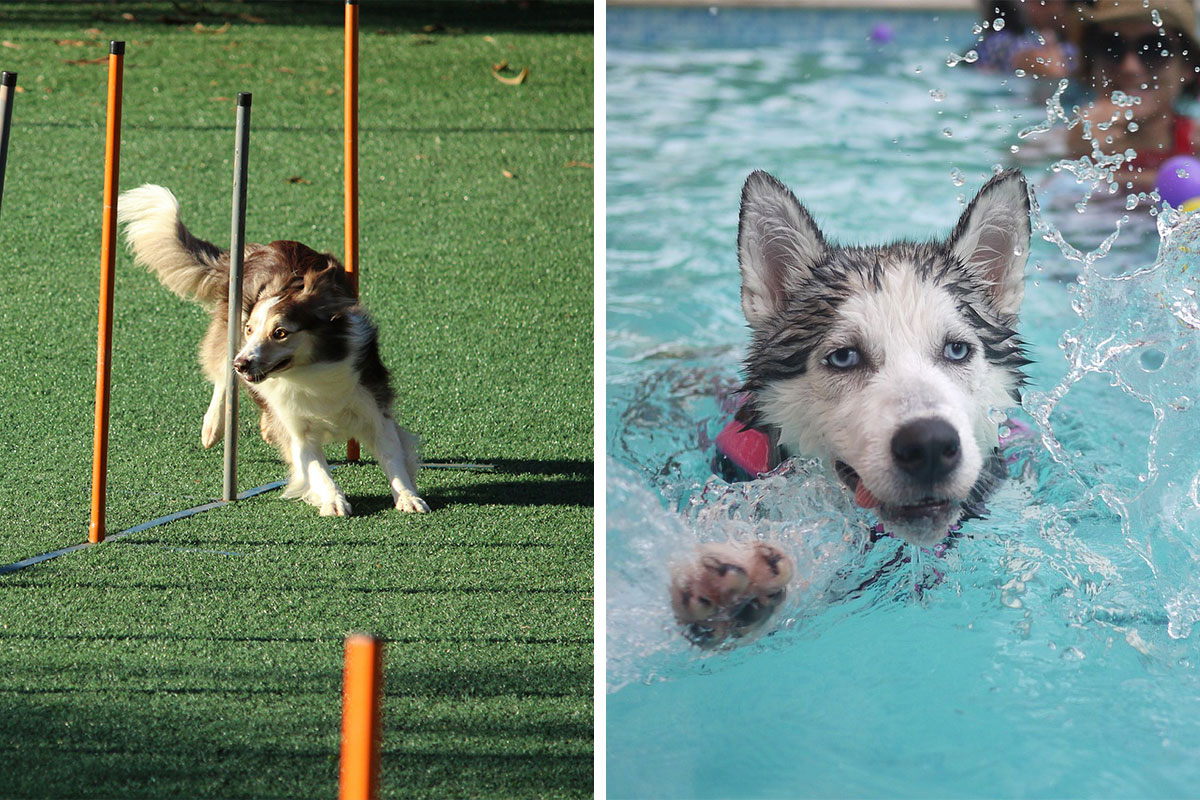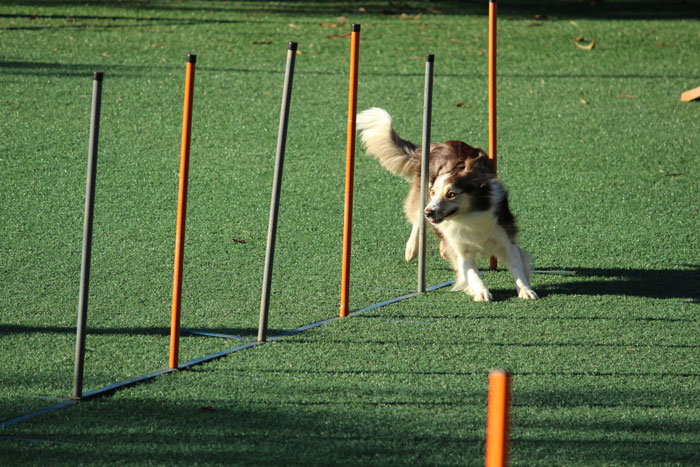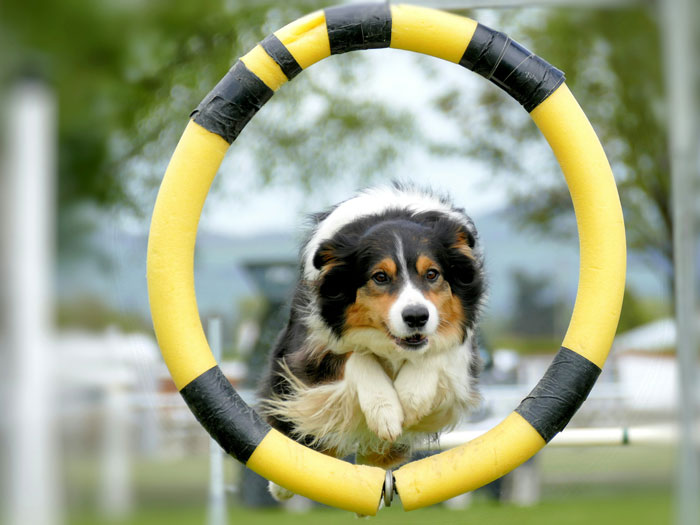Experts agree that finding the right amount of exercise for your dog can be a challenge. There is no one-size-fits-all answer, as individual factors such as breed, age, and health play a role. However, it is generally recommended that dogs get between 30 minutes to 2 hours of exercise every day. This can include a combination of walks, playtime, and other activities.
- Dogs need 30 mins to 2 hrs of exercise daily.
- Exercise varies by breed, age, energy levels.
- Puppies need short bursts of exercise and rest.
- Senior dogs require low-impact exercise.
It is important to consider your dog’s specific needs and consult with your veterinarian to develop an exercise routine. In this article, we will guide you about how much exercise does a dog needs and explore the factors that may affect this requirement.
The information provided herein is for informational purposes only. Please refer to our disclaimer for more details..
Benefits of Daily Exercise
Just like humans, dogs need daily exercise to keep them healthy and content, to stimulate them physically and mentally, it’s a need of their mind and body to keep functioning normally.
Here are some of the benefits:
- Exercise fulfills the dog’s need to dispense energy and stay active.
- Exercise keeps your dog physically and mentally healthy, fit and energetic.
- Exercise burns extra calories and maintains an optimum desired weight for your dog preventing the risk of obesity.
- Daily walks and play activities help your dog stay happy and strengthen the bond between dog and its owner.
How Much Exercise Does a Puppy Need?
Puppies have different exercise needs compared to adult dogs. They have more energy and require shorter bursts of exercise throughout the day. The amount of exercise a puppy needs depends on factors such as breed and size. It is important to research your puppy’s breed to understand their specific exercise requirements.
In general, physiologically, puppies need a short burst of exercise session from time to time and a longer period of nap and rest in between.
Recommended Activities for Puppies
Generally, short walks and multiple play sessions spread throughout the day are recommended for puppies. These activities help with their physical and mental development. Remember to keep the exercise sessions age-appropriate and avoid over-exercising puppies, especially large-breed puppies, as it can lead to joint and bone problems.
- Short walks: Take your puppy on short walks a few times a day. Make sure they are vaccinated before you start taking them out on the streets or park.
- Play sessions: Engage in interactive play sessions with toys or other puppies to keep them active and stimulated.
- Training activities: Incorporate training activities that involve mental stimulation along with physical exercise.
By providing adequate exercise for your puppy, you can ensure their well-being and help them develop into happy and healthy adult dogs.
How Much Exercise Does an Adult Dog Need?
When it comes to the amount of daily exercise your dog needs, several factors come into play such as breed, size, and energy level. As a general guideline, adult dogs should get between 30 minutes to 2 hours of exercise each day to keep them physically and mentally stimulated. This exercise routine can consist of various activities like walks, playtime, and training sessions.
Exercising your dog is not only essential for their overall well-being but also plays a crucial role in preventing behavioral issues that may arise from pent-up energy. By incorporating regular exercise into your dog’s routine, you can lower the chances of them engaging in destructive behaviors such as excessive chewing, digging, or barking.
How Much Exercise Your Dog Needs? Understanding Your Dog’s Exercise Requirements
The exercise needs of dogs are affected by their breed, age, and energy levels. Understanding these factors can help you determine the right amount of physical activity for your furry friend.
Breed:
Every dog breed is diverse in terms of anatomy and behavior and has different exercise requirements. Some breeds, like Border Collies, are high-energy and require plenty of exercise to stay healthy and happy. Other breeds, such as Bulldogs, are more low-key and require less exercise.
Similarly size is a factor in small breed dogs like toy poodles and Shih Tzu can’t endure strenuous exercise and just need moderate exercise in the backyard or a park.
Moreover, there are medium to large breed dogs, for instance, Pointers and Labradors that belong to retriever class, they need at least 1 to 2 hours of exercise and enjoy activities like swimming and hiking.
Age:
Puppies and younger dogs need more frequent exercise than adult and senior dogs. Puppies have high energy levels and require playtime and activities that help them develop motor skills and socialize. Senior dogs, on the other hand, may have mobility issues and may need a less demanding exercise routine.
Energy Levels:
Your dog’s individual energy levels play a significant role in determining their exercise needs. Some dogs are high-strung and require more exercise to calm down and reduce anxiety, these hyper active dogs can suffer from destructive behaviors due to a lack of exercise. Other dogs may be more laid-back and content with less physical activity.
Similarly athletic dogs like race dogs e.g. Greyhounds and sled pulling dogs like Alaskan Husky have entirely different exercise and nutrition requirements compared to a house pet.
Designing an Exercise Routine
To make sure your dog is getting the right amount of exercise, it’s crucial to create a well-rounded exercise routine based on their specific needs. Here are some tips to help you design an effective dog exercise routine:
- Vary the types of exercise: Incorporate different activities into your dog’s routine to provide mental stimulation and prevent boredom. This can include walks, runs, playing fetch, swimming, or engaging in organized dog sports.
- Break the sessions throughout the day: Instead of one long exercise session, consider dividing the exercise into multiple shorter sessions throughout the day. This helps to keep your dog engaged and prevents them from getting overly tired.
- Engage in interactive play: Incorporating interactive play, such as hide-and-seek, puzzle toys, or obedience training when you teach your dog basic commands, can provide mental stimulation while also giving them the physical exercise they need.
How Much Exercise Does a Senior Dog Need?
As your furry companion enters their golden years, their exercise requirements may decrease compared to their adult counterparts. The amount of exercise a senior dog needs depends on factors such as their overall health, mobility, and energy level. Although they may not have the same stamina as before, regular exercise remains important for their well-being.
To ensure your senior dog stays in good shape, it’s crucial to consider their limitations and choose activities that are suitable for their age. Low-impact exercises are ideal for older dogs, as they provide physical and mental stimulation without putting too much strain on their joints.
Arthritis is a common orthopedic issue in senior dogs, through these exercise modifications you can safely gain the necessary mobility your dog needs.
Short walks can be a great way to keep your senior dog active and engaged. Aim for multiple sessions throughout the day, allowing them to enjoy the outdoors and get some light exercise. Gentle play sessions, such as interactive toys or gentle games of fetch, can also be beneficial.
Additionally, mental stimulation exercises can help keep your senior dog happy and mentally sharp. Engage them in puzzle toys or teach them new tricks to challenge their minds.
It’s important to note that every senior dog is unique, and their exercise needs may vary. Be attentive to their cues and consult with your veterinarian about any specific concerns or medical conditions your dog may have.
Different Types of Exercise for Dogs
Dogs have diverse exercise needs to meet their physical and mental well-being. By incorporating a variety of activities into your dog’s exercise routine, you can keep them engaged and fulfilled. Here are different types of exercises that dogs can enjoy:
Daily walks: Taking your dog for regular walks is a great way to provide them with the physical activity they need. Whether it’s a leisurely stroll in the neighborhood or an energetic hike on a nature trail, walking is an essential exercise for dogs.
Cycling or skating with your dog: If you enjoy cycling or skating, you can bring your dog along for the ride. Attach a special leash to your bike or wear rollerblades or a skateboard to give your dog an opportunity to exercise alongside you.
Swimming: Many dogs love water, and swimming is an excellent low-impact exercise that provides a full-body workout. If you have access to a dog-friendly beach, lake, or pool, swimming can be a refreshing and enjoyable activity for your dog.
Playing fetch: Engaging in a game of fetch is an interactive way to exercise your dog and strengthen your bond. Tossing a ball or a favorite toy can keep them physically active and prevent boredom.
Remember, different breeds and individual dogs have varying exercise preferences and requirements. Consider your dog’s age, health, and energy level when choosing activities.
Conclusion
Regular exercise is essential for maintaining the overall well-being and health of your dog. Whether they are a puppy, adult, or senior, exercise plays a vital role in keeping them physically and mentally fit. By providing regular physical and mental exercise, you can help prevent behavioral issues, promote a healthy weight, and improve your dog’s overall quality of life.
Remember to tailor your dog’s exercise routine according to their age, breed, and individual requirements. For puppies, shorter bursts of exercise throughout the day are necessary, while adult dogs may need longer sessions. Senior dogs may have lower exercise requirements but still benefit from gentle activities that help maintain mobility and mental stimulation.
By prioritizing your dog’s exercise routine and providing a range of activities, you can contribute to their physical and mental well-being, resulting in a happy and healthy companion.
680views
Share on FacebookOur dog was a Husky/Malamute cross, and was an old lady of 8 when she came to live with us. It had been identified she had the start of hip problems, and they would increase with age. Based on this, we walked her four times a day for around 20-ish minutes. Sh used these walks for elimination, for social interaction, exercise her brain, and to help maintain her mobility. Once a week, we'd go to the beach, and she could run/walk/pootle around off leash. This level of exercise suited our elderly dog very well. She enjoyed going out, being out, and also coming home.
Our dog was a Husky/Malamute cross, and was an old lady of 8 when she came to live with us. It had been identified she had the start of hip problems, and they would increase with age. Based on this, we walked her four times a day for around 20-ish minutes. Sh used these walks for elimination, for social interaction, exercise her brain, and to help maintain her mobility. Once a week, we'd go to the beach, and she could run/walk/pootle around off leash. This level of exercise suited our elderly dog very well. She enjoyed going out, being out, and also coming home.

 Image credits:
Image credits:  Image credits:
Image credits: 


-2
1